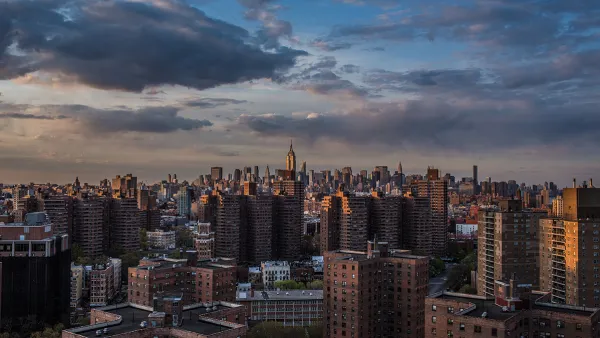Josh Barro examines the possible use of inclusionary zoning to generate affordable housing stock in the city of New York City finding that the only way to build more affordable units is by increasing density.

As part of an ambitious plan to build new housing, New York City Mayor Bill de Blasio is proposing that the city create more affordable housing units by making inclusionary zoning mandatory because the cost of affordable units under the current voluntary system makes them a hard sell, even with density bonuses as incentives. "Mayor Bill de Blasio wants to create more affordable units by making inclusionary zoning mandatory: In areas rezoned to allow more density, developers would have to set aside inclusionary units, whether they used the additional density permitted by the zoning or not. By imposing this mandate, the mayor hopes to get both bigger buildings and more affordable units within those buildings."
Acknowledging that mandatory inclusionary zoning has proven both unpopular and, possibly, less than effective, Barro considers an alternative measure: "Nathan Newman, the housing activist behind the group More NYC, offers another suggestion: straight up cash. In a recent report, he argued that the city should drop inclusionary zoning and instead offer developers additional density in exchange for cash payments that the city could use to finance affordable housing programs."
The problem with that plan is that pesky scarcity of available land, which also makes the cash for affordable housing deal less than ideal: "if new dollars to subsidize affordable housing end up chasing fixed quantities of land and apartments, that could just drive up rents for middle-income New Yorkers."
In summation, "the city should impose this costly mandate only if it also increases possible development and decreases the cost of building."
FULL STORY: Affordable Housing That’s Very Costly

National Parks Layoffs Will Cause Communities to Lose Billions
Thousands of essential park workers were laid off this week, just before the busy spring break season.

Retro-silient?: America’s First “Eco-burb,” The Woodlands Turns 50
A master-planned community north of Houston offers lessons on green infrastructure and resilient design, but falls short of its founder’s lofty affordability and walkability goals.

Delivering for America Plan Will Downgrade Mail Service in at Least 49.5 Percent of Zip Codes
Republican and Democrat lawmakers criticize the plan for its disproportionate negative impact on rural communities.

Test News Post 1
This is a summary

Test News Headline 46
Test for the image on the front page.

Balancing Bombs and Butterflies: How the National Guard Protects a Rare Species
The National Guard at Fort Indiantown Gap uses GIS technology and land management strategies to balance military training with conservation efforts, ensuring the survival of the rare eastern regal fritillary butterfly.
Urban Design for Planners 1: Software Tools
This six-course series explores essential urban design concepts using open source software and equips planners with the tools they need to participate fully in the urban design process.
Planning for Universal Design
Learn the tools for implementing Universal Design in planning regulations.
EMC Planning Group, Inc.
Planetizen
Planetizen
Mpact (formerly Rail~Volution)
Great Falls Development Authority, Inc.
HUDs Office of Policy Development and Research
NYU Wagner Graduate School of Public Service




























